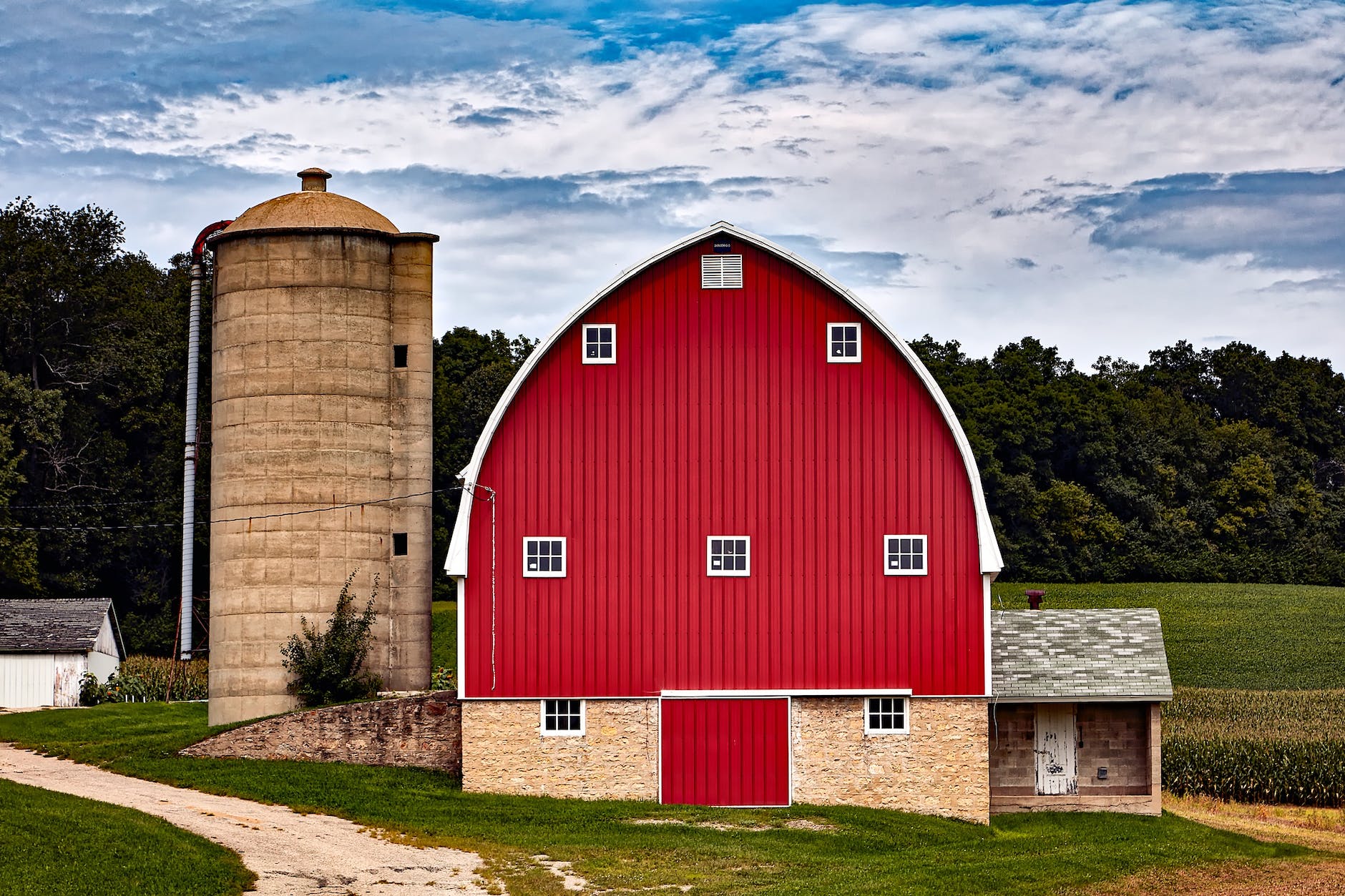In the vast landscapes of rural America, where agriculture has been a way of life for generations, a quiet revolution is taking place. Artificial Intelligence (AI) is permeating every aspect of rural life, from farming practices to community services, bringing about transformative changes that promise to reshape the future of these communities.
This article explores the ways in which AI is making a significant impact on rural life in the United States, ushering in a new era of efficiency, sustainability, and innovation.
I. Precision Agriculture
Outside of agriculture, AI is also progressing in enhancing rural health care delivery. Rural areas are also disadvantaged in terms of quality healthcare provision because there is a lack of medials professionals and facilities. AI closing the gap by offering innovative solutions that improve diagnostics, patient care and overall healthcare provision.

- AI algorithms underpin telemedicine, which provides remote consultations and diagnostics.
- AI is capable of accurately analyzing medical images, including X-rays and MRIs which helps healthcare professionals in remote places to make better choices.
- Predictive analytics can detect emergent health concerns within a population and through this means develop preventative measures that decrease the pressure on rural healthcare facilities.
II. Rural Healthcare Solutions
AI also has a central part in the rural infrastructure modernisation, making communities intelligent and networked. With the help of artificial intelligence algorithms, smart grids improve energy distribution efficiencies making it possible to reliably ensure rural areas stay fully powered. This not only helps to solve the problem of energy access but also makes a contribution towards limiting environmental degradation due to producing and using various sources of energy.

- Artificial intelligence based systems are facilitating growth in transportation networks of undeveloped regions.
- The autonomous vehicle concept has also begun to be tried out on the market due to issues such as longer distances, lack of public transport and so forth.
These innovations not only simplify rural life but also begin to connect these communities with larger, economic opportunities.
III. Smart Infrastructure

AI is also playing a crucial role in upgrading rural infrastructure, transforming communities into smart, connected hubs. Smart grids, powered by AI algorithms, enhance the efficiency of energy distribution, ensuring a reliable and sustainable power supply to rural areas. This not only addresses the challenges of energy access but also contributes to reducing the environmental impact of energy production.
IV. Education and Skill Development:
In rural learning, which is among the areas that are undergoing tremendous change with AI integration into it. Remote students receive a new dimension to education through properly designed online learning platforms backed by AI-driven adaptive algorithms. This way, the gap in education is bridged and ensures that any student from rural areas has good educational materials.

- AI is supporting skill development programs to equip the rural workforce for future needs of the modern economy.
- Artificial intelligence (AI)-powered online courses and training programs have the ability to spot learning needs among individual employees, personalize content for each case as well as monitor performance.
Not only this brings new skills to rural individuals but it also improves the ability of these people get jobs.
V. Challenges and Considerations
Because AI integration leads to a number of advantages for rural communities, it is important to consider challenges and ethical concerns related this change. However, prior issues worth consideration include the potential displacement of jobs via automation and data privacy concerns in addition to much-needed tough cybersecurity measures. Secondly, the provision of benefits from AI to all residents regardless may contribute as a step toward eliminating socioeconomic disparities in technology.
VI. Community Empowerment through AI
Besides the discussed sectors, AI is empowering community development and governance in rural areas. Local challenges are being addressed using local AI applications, and residents’ quality of living is increased. For example, AI-based platforms aid water resources management making it more efficient and help the rural communities get through the droughts ensuring a sustainable supply of fresh waters for agriculture as well as household uses.
AI-powered community engagement tools are promoting deeper links among citizens.
Social networks and communication tools, empowered by AI algorithms, are capable of local sentiments analysis as well as community needs identification and enable to make collaborative decisions.
This not only helps residents to develop a strong sense of community but also empowers them in the process as they actively engage in setting development and governance trajectories for their communities.
VII. Environmental Monitoring and Conservation
So, AI-technologies are indeed friends in fighting with the environmental and nature loss process monitoring as well as conservation tasks performed among people of rural areas.
Using satellite imagery and sensor networks, there is the capacity of having AI algorithms curb excessive amounts of data to sense changes on land useability besides detecting deforestation as well as monitoring ecosystem health. Such knowledge is essential in formulation of strategies that will provide effective conservation and promote sustainable operations within rural zones.

- Artificial Intelligence is helping in wildlife conservation by tracking and monitoring endangered species using real time.
- Drones fitted with AI-enabled cameras can cover large areas of the land, enabling conservationists to keep a vigil on wildlife populations and also detect poaching activities. Such drones could be used by them for taking targeted actions for saving endangered birds or animals.
This use of artificial intelligence not only provides biodiversity protection but also natural environment and rural communities’ coexisting in harmony.
VIII. Democratizing Access to Information
AI is putting forward tremendous efforts in democratizing information accessibility to the rural students. AI-driven communication tools that are voice or text based will begin to be integrated which breakdown language barriers and provide information in a way relevant for residents with low literacy levels. This is particularly outlined in the health sector, education and other critical services where putting across of clear issues becomes mandatory.
Adding to these, AI-powered language translation tools and programs are radically simplifying overseas communication thus allowing rural communities have the connection they need with a broader world. It does not only promote the cultural exchange of ideas but it also provides new economic and business opportunities through trading and cooperation beyond its borders.
IX. Addressing the Digital Divide
Even though AI is for the better, it also important to address some of these patterns such as digital divide among those rural areas. The essential precondition for successful application of AI technologies is access to fast, high-speed internet and the required infrastructure. In order to reap the benefits of AI application, governments need partnership with private stakeholder engage in their success by ensuring must be provided.
Apart from that, strategies related to digital literacy and skills formation are indispensable since they help residents harness the power of AI technologies. By embedding programs such as training regimes and community workshops within locations where people live in the countryside, it is possible that individuals will be trained to have the necessary skills of interfacing with AI-informed devices.
AI Tools for Farmers to Increase Their Productivity
Field Monitoring & Optimization:
- Cropin: Remote sensing, weather advisory, crop health monitoring.
- OneSoil: Satellite data analysis for soil conditions, crop types, planting/fertilization.
- FarmOS: Comprehensive platform for data management, field mapping, precision agriculture tools.
Pest & Disease Management:
- Plantix: Smartphone image identification of plant diseases & pests, treatment recommendations.
- ScoutingBee: AI-powered drones detect early signs of disease & pests for targeted interventions.
- Prospera: AI disease prediction & spray optimization to minimize pesticide use.
Precision Irrigation & Automation:
- Netafim NetBeat: Sensor-based AI optimizes water usage for irrigation, saving water & improving yields.
- FieldAware: Platform for managing irrigation systems with real-time weather data & predictive analytics.
- Blue River Technology: Autonomous weeding robots use computer vision to eliminate unwanted plants.
Livestock Management:
- SmaArtFarm: AI analyzes video & sensor data to monitor livestock health, detect diseases early, optimize feed management.
Bonus:
- Microsoft FarmVibes: Open-source tools & datasets for research & development in AI agriculture. https://www.microsoft.com/en-us/research/project/project-farmvibes/
- Harvest CROO Robotics: AI-powered strawberry-picking robots address labor shortages & reduce fruit waste. https://www.harvestcroorobotics.com/
Explore these diverse tools and find the perfect fit for your farming needs!
Conclusion
However, the fields that have been transforming faster than ever before instances in which this is happening slowly but steadily are bus maintenance around rural areas throughout America. In the implementation of precision agriculture, health care, education, community reinforcement and environmental protection alongside availability of information to these communities AI has come as a source for change but at this respect it can either positive changes or negatives.
Nevertheless, the road to a full AI-enabled rural America is not devoid of earthquakes. AI emerges as a strand in the grand tapestry of rural existence linking up different elements with one tale- progress, innovation and resilience. AI and other such advancements in technology are a fore seeable future; hence, an inclusive perspective towards these developments is required to assure that the benefits of its transforming nature help all aspects of rural America.





